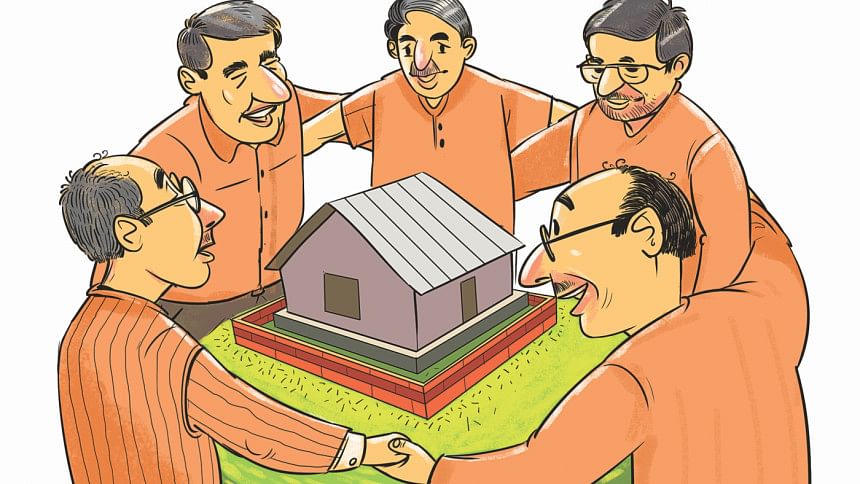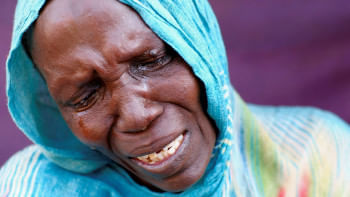Making affordable housing a reality

Ruhul Amin, 38, shifted to Dhaka from his hometown Khulna 12 years back in search of a better life. He now lives with his family of four people in a rented apartment with very limited facilities, in Mirpur. Whilst Ruhul has been trying to purchase an apartment in the city for quite some time now, he has been unable to do so due to the high housing prices. He will have to accumulate at least 30 lakh taka to fulfill the dream of owning an apartment as it is too costly for him to pay rent every month.
Ruhul and his family are only one example amongst 70.73 percent of the middle income families who cannot afford proper housing in Dhaka city.
The huge gap between demand and supply for housing in Bangladesh is one of the main challenges for establishing an affordable housing system in the country. With an increasing population and scarce land as well as lack of adequate policies for ensuring proper housing facilities, Bangladesh still has a long way to go to cater to its middle-income and low-income population, in particular.
According to a report titled “Dhaka Structure Plan 2016-2035” presented
by Rajuk in 2015, factors such as high prices of land and houses due to excessive demand, high interest rate on bank credit, scarcity of buildable land for affordable housing projects, and failure to implement need-based actions in accordance with the National Housing Policy to cater to the housing crisis for the middle and low income population, are major contributors towards unaffordable housing in the country. Consequently, some families are bound to live in low-grade houses whilst others, who intend to reside in quality accommodation, have a higher opportunity cost in order to meet the cost of housing. Other determinants such as high rate of rural-to-urban migration giving rise to informal settlements also contribute to the prevailing challenges.
Alamgir Shamsul Alamin, President, REHAB, shares, “To arrange housing facilities for the middle or low income population, the pre-condition is determining the price first. If any apartment goes beyond 30 lakh taka, it will be difficult for the middle-income group to purchase an apartment. However, given the high land prices in Dhaka city, it is extremely difficult to provide housing within 30 lakh taka.”
Ishrat Islam, Professor and Head, Department of Urban and Regional Planning, BUET, shares, “The government can play a major role by putting an end to the policy of selling plots. For example, when plots are sold in Purbachal, the price of the plot has to be paid to the government which may cost around 2-2.5 lakh taka per katha. This means, one can obtain a five katha plot costing 10-12 lakh taka. When individuals obtain a plot, they can sell it to other individuals or developers for prices as high as 70-80 lakh taka per katha and earn profits in crores. Consequently, the individuals or developers are bound to set high prices once they are done establishing apartments as they are profit-oriented. Thus, the purchasing capacity of the middle-income population diminishes. Instead of selling plots, establishing block system—both apartment blocks and block-based housing, of different sizes, through which people can obtain only housing, instead of land for development—can be one of the solutions to make the housing system more affordable in the country.”
Alamgir Shamsul Alamin adds, “It is not possible to change prices of construction materials much. Therefore, we have to alter land and housing prices. The government should provide special rates, home loans, mortgage and other financial support for the middle-class population. Moreover, the interest rate should be single-digit and the payback period should be extended from 15 years to 25 years.”
In order to increasingly cater to the middle-income and low-income population as well as slum-dwellers and other affected people, National Housing Authority (NHA) is attempting to implement affordable and more convenient housing facilities in Dhaka city and beyond. In Dhaka, they are implementing residential and commercial projects in Dhanmondi, Lalmatia, Mirpur, Mohammadpur, and Shyamoli. They are also undertaking projects in 15 zilas and eight upazilas.
Md Rashidul Islam, Chairman (Additional Secretary), NHA, informs, “We have established a system through which individuals, regardless of their income levels, wishing to buy flats can apply for houses of their desired size through a prospectus. Individuals, whether they reside in the country or abroad, have to submit required documents and pay a security deposit through pay-order, based on their desired flat size, to submit the application form in the stated time. After careful selection, through a lottery system, individuals are selected to buy flats. The first 50 percent of the cost of an apartment has to be paid within three years in four equal installments. The first installment has to be paid within a month and the next three installments have to be paid in 12-month intervals. The individuals are permitted to live in the flats after the initial 50 percent payment is made. The remaining 50 percent payment has to be made through monthly installments within the next 16 years along with nine percent interest. After that, the lease deeds are given to the owners. Also, if individuals can afford to pay the full amount before 16 years, the lease deeds are handed over to them as soon as they make the final payment.”
He added, “The size of the apartments is typically between 800 to more than 1,500 sq ft. Apartments of size 800-1,000 sq ft. consist of two bedrooms, a living room, a dining room, two toilets, and two balconies. Apartments beyond 1,500 sq ft. have three bedrooms, one living room, one dining room, four toilets, three balconies and one kitchen. Every three to five years, the government fixes a housing estate land rate for individual areas. For instance, the current housing estate land rate in Lalmatia is 60 lakh taka. In private terms, this rate is over one crore taka but since the government fixes the price for us, we get these lower rates. The latest PWD rate of schedule for 2018 consists of construction cost. Both these costs lead to a pricing of 4,300-5,500 taka per sq ft. for flats. So, typically, a 1,000 sq ft. flat costs around 45 lakh taka, and a 1,500 sq ft. flat costs around 65 lakh taka or more.”
He further shared that they have a special rental provision of high-rise buildings for the slum dwellers in Mirpur. The apartments are approximately 660 sq ft. comprising of two bedrooms, a small kitchen, a toilet and a balcony. They can pay the rent through two methods: daily payments of approximately 250 taka via bKash or any other app or a monthly rent of around 7,000 taka. The cost of these flats is around 22 lakh taka.
The public and private sectors are increasingly moving towards block-based housing development which comprises of clusters of multi-storied buildings in a community. Such a system is appropriate for a land-scarce city like Dhaka. It includes community and recreational spaces nearby—schools, departmental stores, mosques, etc. Japan Garden City in Mohammadpur, Lake City Concord in Khilkhet, Rupayan City in the peripheral region of Narayanganj are some prominent examples. However, there is great scope for improvising facilities in this housing method.
All three experts strongly advocated for decentralisation as the land and housing prices outside Dhaka are relatively low. They added that given the ongoing projects such as Dhaka Metro Rail, Dhaka Elevated Expressway, etc., housing plans should be established around these areas to ease commute and increase the supply of affordable housing. Nevertheless, the problem of high land prices may still persist due to the growing demand for land around these commuting routes. Better services and compliance are also some factors to improvise on. They further emphasised on strong government intervention as reports suggest that the government can meet only seven percent of the annual housing demand. In this regard, Ishrat Islam shared that taking feedback from people, particularly from the middle-income and low-income groups, can help give a clearer picture of the sort of housing facilities that should be provided by the authorities, as failure to provide suitable housing for these income groups has led to an overall housing crisis in the country, given they comprise almost 60 percent of the entire population.

 For all latest news, follow The Daily Star's Google News channel.
For all latest news, follow The Daily Star's Google News channel. 



Comments